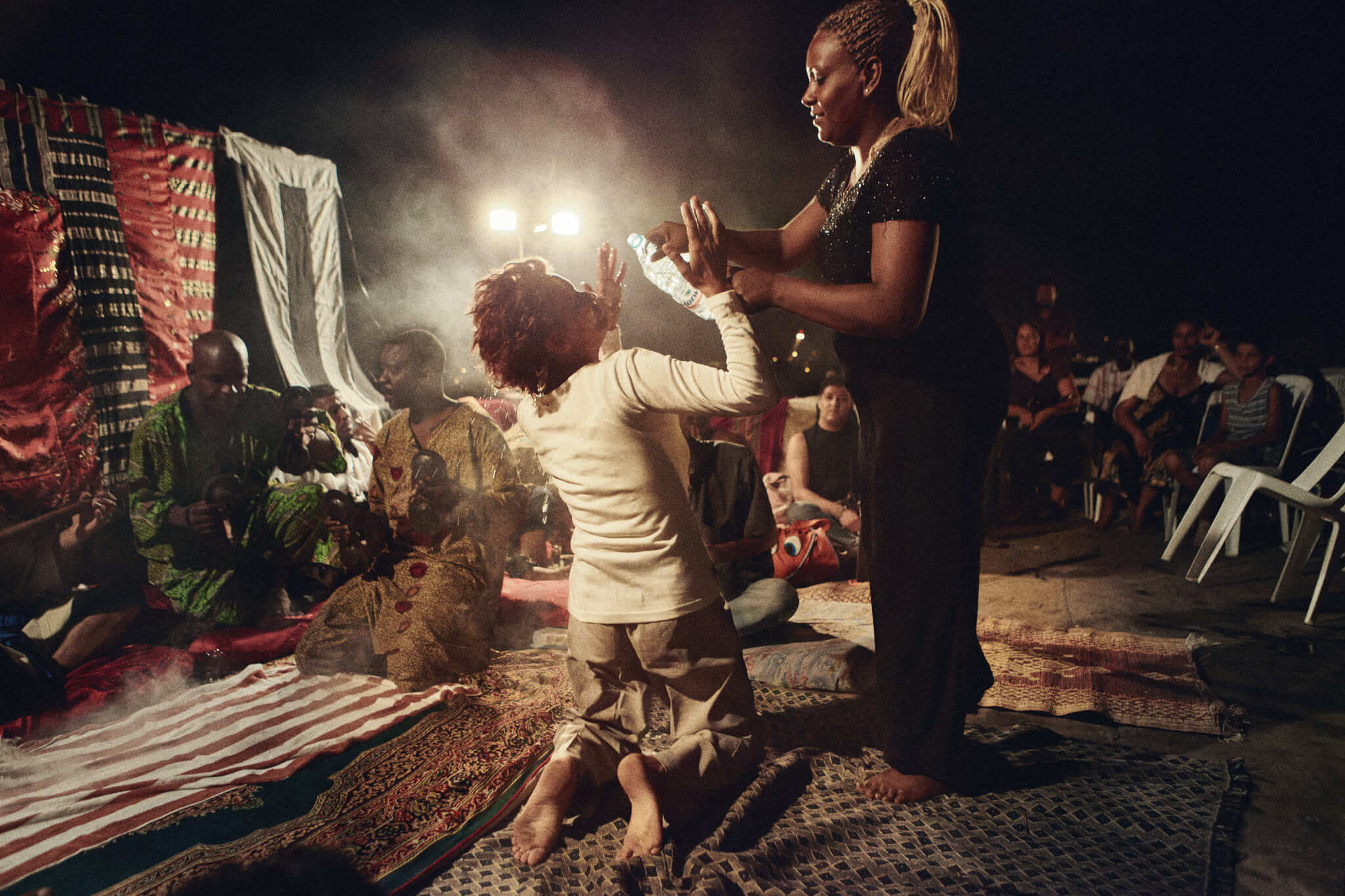Black spirits, white saints
Richard C. Jankowsky
Stambēlī is a music and trance healing tradition first developed in Tunisia by slaves and other displaced sub-Saharans who brought their musical and spiritual traditions with them across the Sahara desert. Its ancestry stems from spirit possession practices among the Hausa, Kanuri, Songhay, and other sub-Saharan peoples. Once in Tunisia, slaves and their descendants adapted these systems to their new Islamic environment, resulting in an elaborate spirit pantheon populated by sub-Saharan spirits as well as Muslim saints from North Africa and the Middle East.
The term “stambēlī” is believed to derive from “sambeli,” a word used among the Songhay and Hausa for certain musical and spirit possession activities.
The main musical instruments are the gumbrī (a three-stringed lute) and the shqashīq (iron clappers). during the early part of some ceremonies, or in street processions, the tabla (a double-headed barrel drum) will replace the gumbrī as he lead instrument. The gumbrī is the instrument that “speaks” to the spirits. Its characteristic sound comes from a layering of three sounds: strums on the strings, beats on its drum-like body, and the buzzing of a metal shaker (shaqshaqa) nestled between the strings. Similar long-necked plucked lutes are found almost everywhere across West Africa, particularly around the Lake Chad area, Tunisia’s main source of slaves. The Hausa molo is also very similar to the gumbrī in its construction and playing technique. The yinna is accompanied by several musi- cians who play short, dense, and incessantly repeated cycles of three-, four-, or five-beat rhythms on the shqashīq.
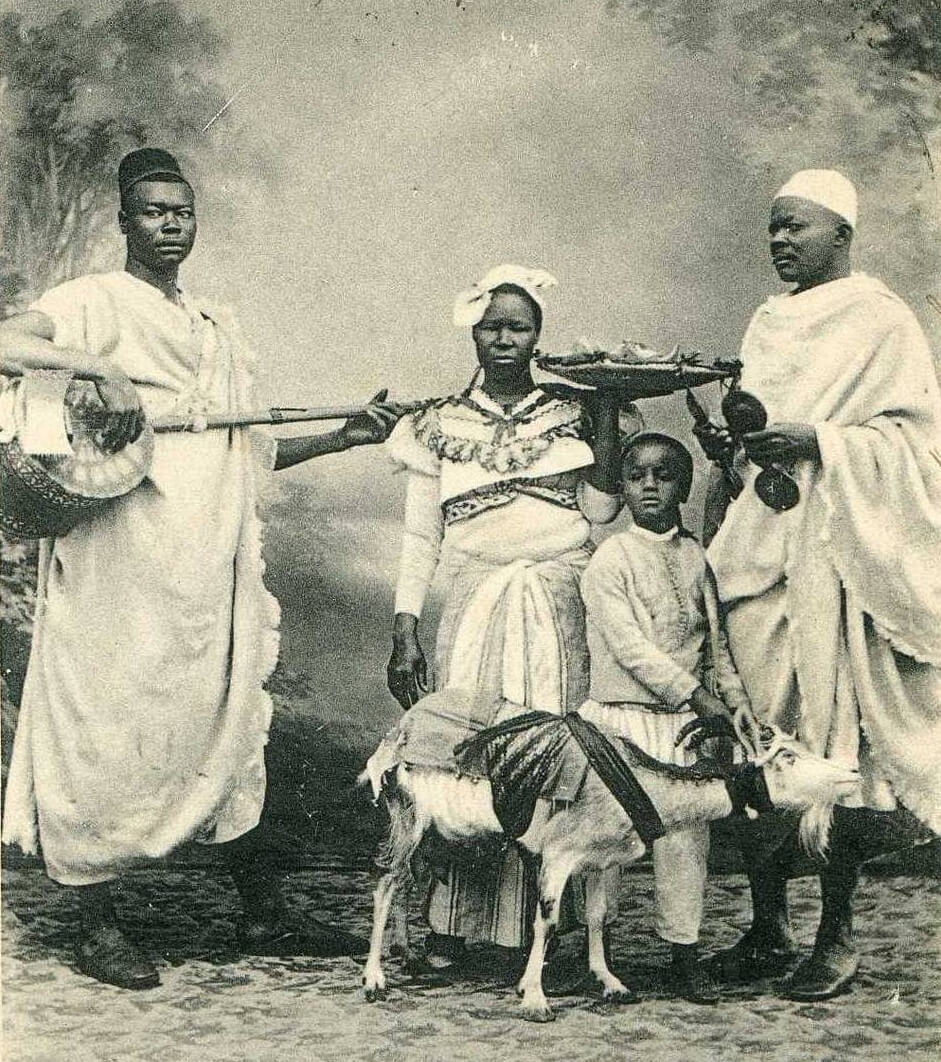
Old postcard, "Die Tunesen", Marquardt’s afrikan. Schaustellung, 1904
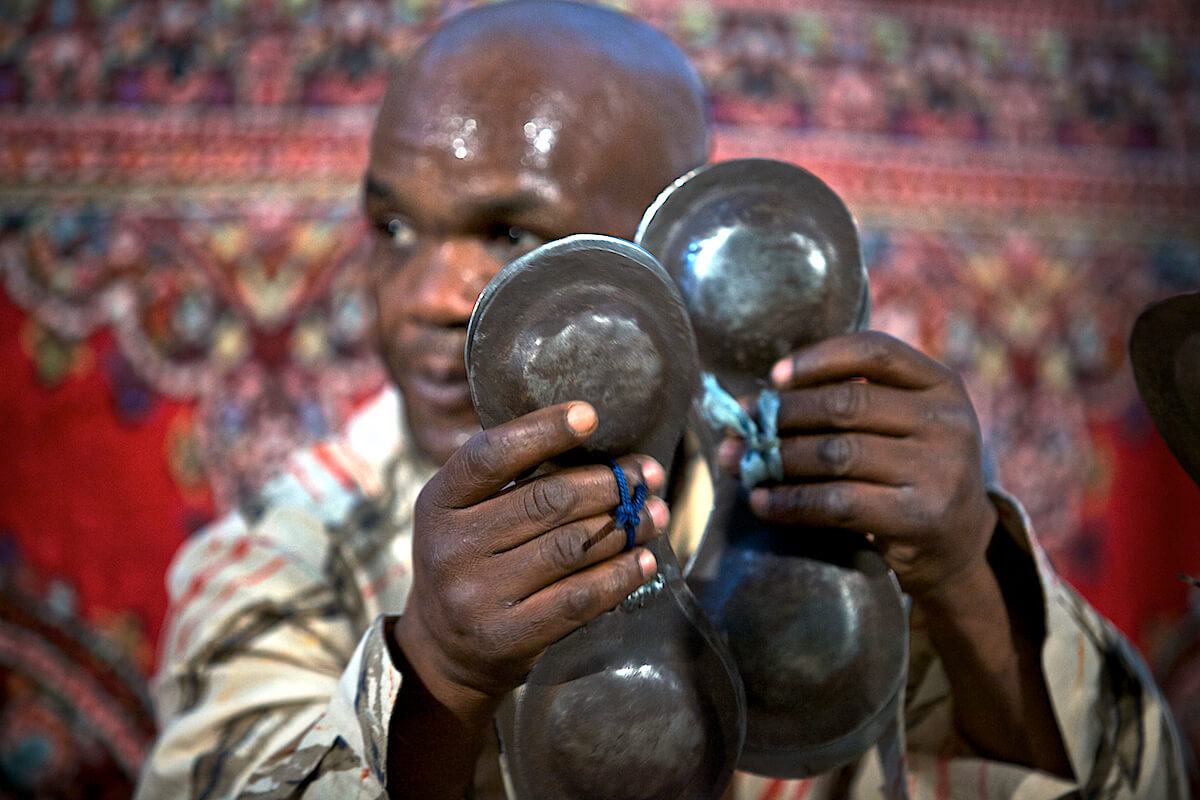
In stambēlī, music is a catalyst for healing. Its ritual role is to attract the spirits to manifest themselves through ritualized possession of a host. once a spirit has taken hold of a host, the music continues to be played for the enjoyment of the spirit, who will be pleased by this rare opportunity to experience the human world and will ordinarily leave the host in peace for the remainder of the year. This is considered a successful “cure.” Since the objective is to coax the spirit back into the host’s body, this is not exorcism, but rather the inverse — what some scholars call “adorcism”. Trance dance constitutes a recurring offering to the spirit. A stambēlī ceremony, it must be emphasized, does not result in a permanent cure. Rather, it provides a means of managing the relationship between an afflicted human and a sometimes pernicious spirit or saint.
In addition to the musicians, the ‘arīfa (healer, lit. “she who knows”, who may also be a man), plays an important role mediating between the human and spirit worlds. The ‘arīfa diagnoses the afflicted, divines which spirits or saints need to be placated, and attends to clients while they are in trance. The ‘arīfa also has the ability to become possessed by any member of the pantheon, and when the spirits speak, they speak through her.
Stambēlī’s linguistic, material, and aesthetic features, including non-Tunisian musical instruments, pentatonic modes, cyclic form, distinctive metallic timbre, and densely layered textures, mark stambēlī as “other” in Tunisian society. Arab Tunisians and stambēlī musicians alike describe it as sūdēnī (“sub-Saharan”) and ‘ajmī (“non-Arab”), terms that are highly valued within the stambēlī community but often used in derogatory ways outside of it.
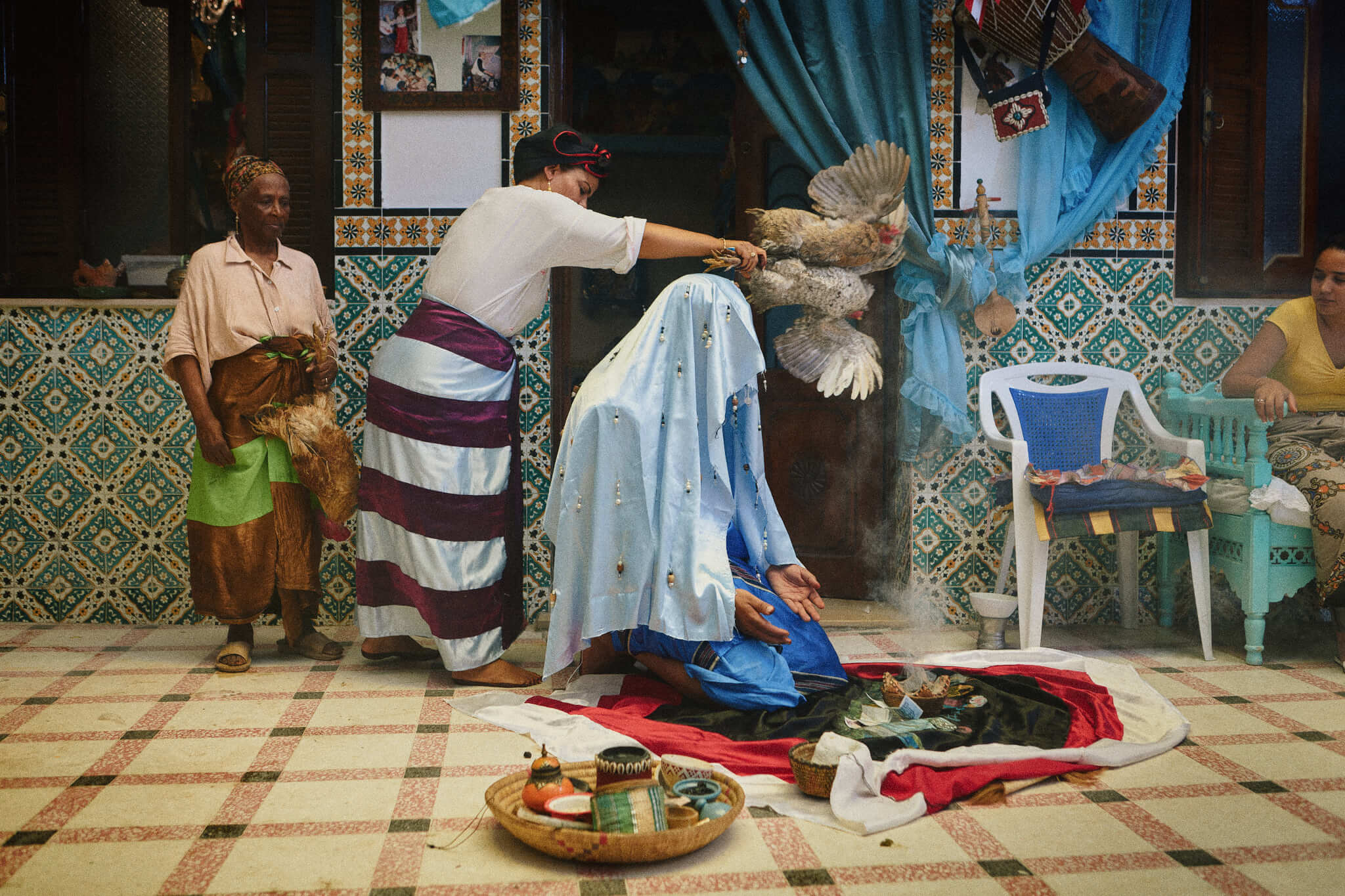
Indeed, though many stambēlī clients and healers, as well as some musicians, are Arab Tunisians (not black), stambēlī remains a mysterious and “exotic” musical tradition even to many Tunisians. But for those whose well-being — be it physical, psychological, social, or spiritual — depends on regularly ap- peasing the stambēlī spirits through ritualized trance, stambēlī continues to perform important traditional healing functions.
Moreover, stambēlī keeps alive the often ignored histories of slavery and subjugation in Tunisia, and reveals how the black slave community’s rich and adaptive cultural traditions created a remarkable space of inclusivity, where sub-Saharan and North Africas converge in both human and spirit forms.
A stambēlī ritual entails the successive invocation of numerous saints and spirits, each of whom has its own signature tune, called a nūba (lit. “[one’s] turn”; pl. nuwāb or nūbēt). These nūbēt, in turn, are organized into several chains (silsilēt sing. silsila), each representing a different family of spirits. This musical organization of the stambēlī pantheon includes a long chain for the saints and five smaller chains for the families of spirits. The saints (awliyā; lit. “[those] close [to god]”) comprise the “white” part of the pantheon, which includes Muslim saints recognized across the Islamic world, regional saints and saints with a mostly local presence, as well as the Prophet Muhammed and Bilel (a former slave and companion to the Prophet who became Islam’s first muadhdhin, or caller-to-prayer).
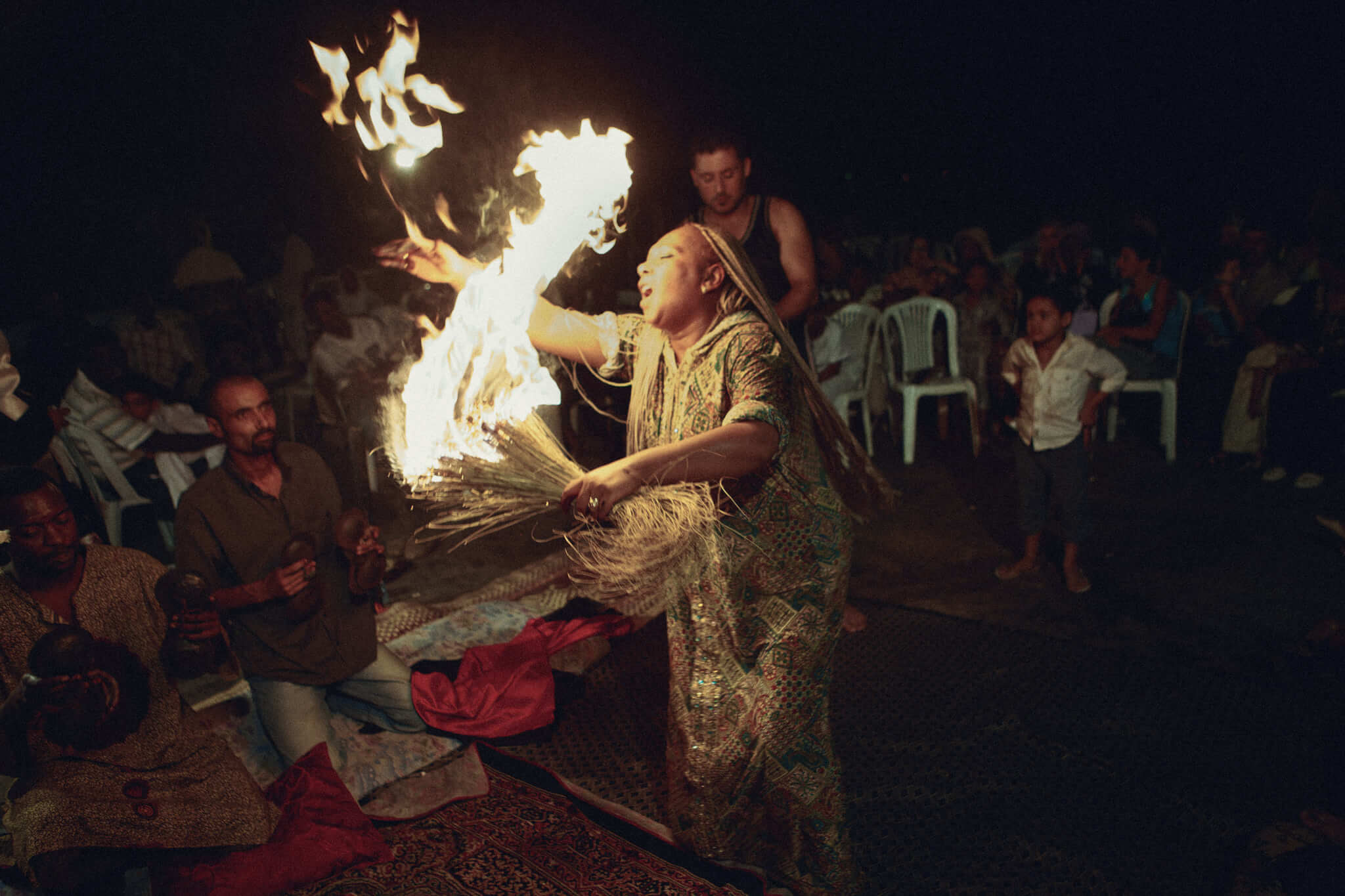
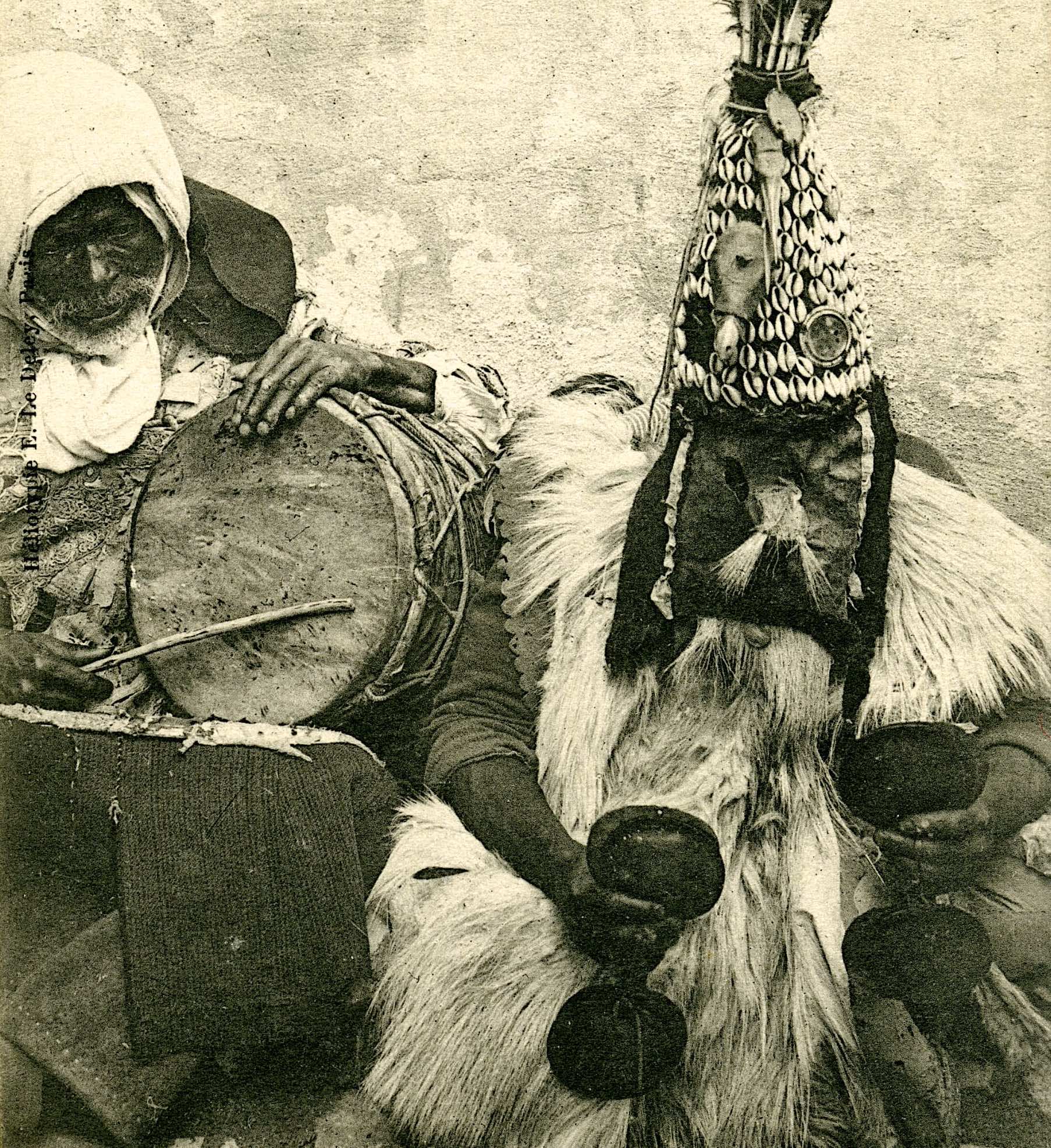
Old postcard, "Tunis, musiciens arabes", circa 1900
The spirits (Salhīn, lit. “holy ones”) comprise the “black” part of the pantheon. They are often mistaken for the jinn (spirits recognized in the Qur’an) by Tunisians outside the stambēlī network. A telling example of the importance of the distinction between stambēlī spirits and the jinn is found in the instructions given to a client who is starting her stambēlī healing process. While Muslims often utter the phrase bismillāh (“in the name of god”) to protect themselves from the jinn in transitional situations (such as upon entering a room or lighting a fire or incense), stambēlī clients are instructed not to say bismillāh before lighting their incense because the spirits might be offended by being confused with the jinn.
While the jinn are unnamed beings originating in the Middle East, the stambēlī spirits all have names, specific identities, and originated in sub-Saharan Africa.
Indeed, they are understood to be like humans in many ways. Each has a distinct personality with certain tendencies, desires, and idiosyncrasies. They have gender, spouses and offspring. In a way it could be said that they are a reflection of the society in which they exist and evolve. All of the spirits are “believers.” While most are identified as Muslim, some spirits are described as Christian. None are pagan.
Stambēlī is a product of, and a commentary on, the historical encounter between sub-Saharan and North Africas. The composition of the stambēlī pantheon, and how it is understood by stambēlī practitioners, shows that much of the cultural “work” of stambēlī is concerned with making connections between these two Africas rather than setting them apart.
